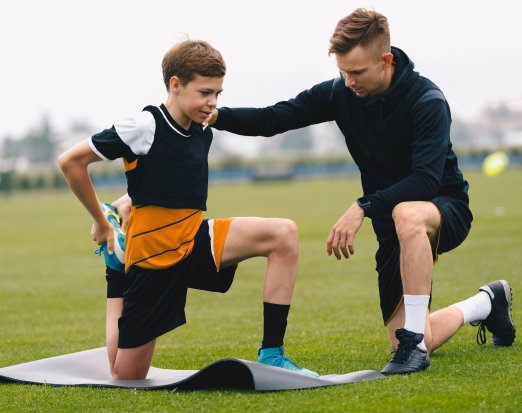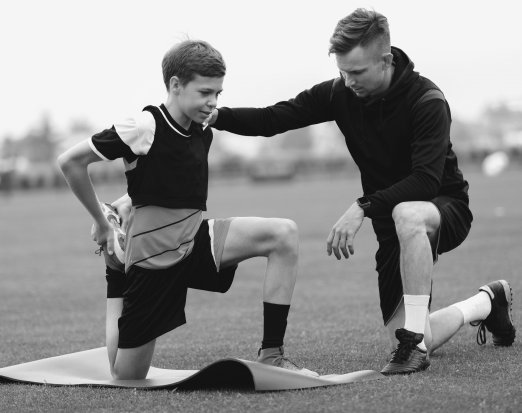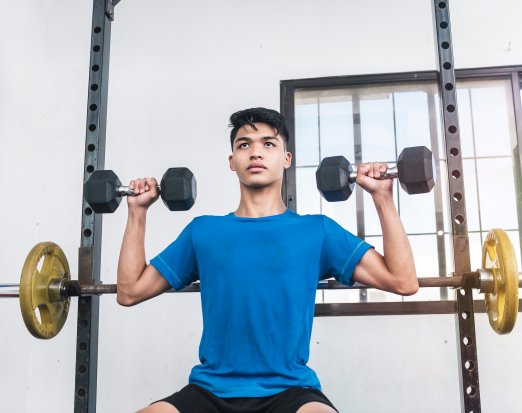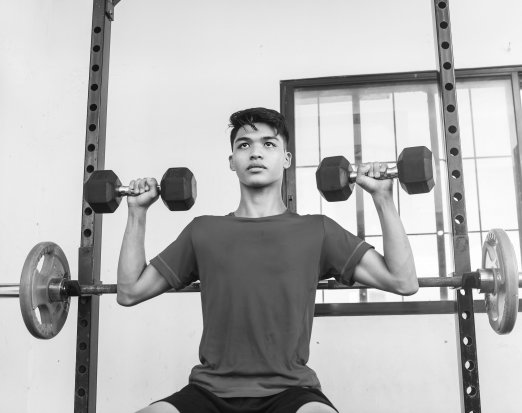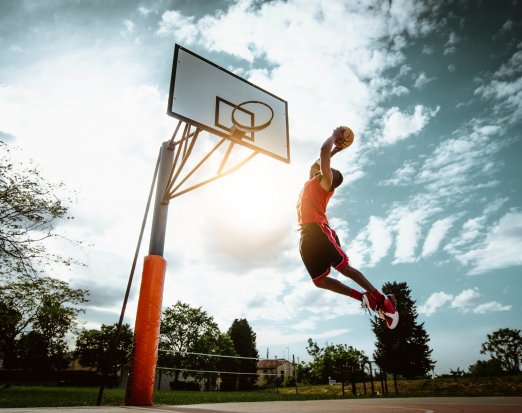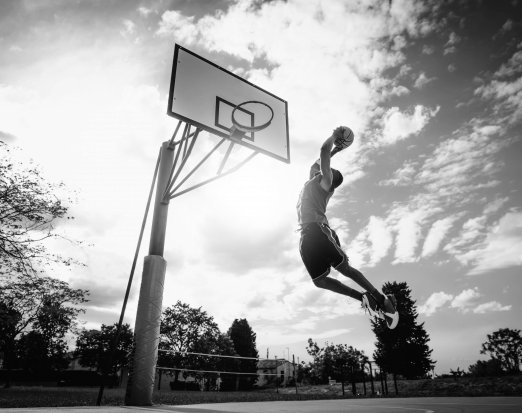How Maturation, Strength Training, & Plyometrics Impacts Sprint Performance
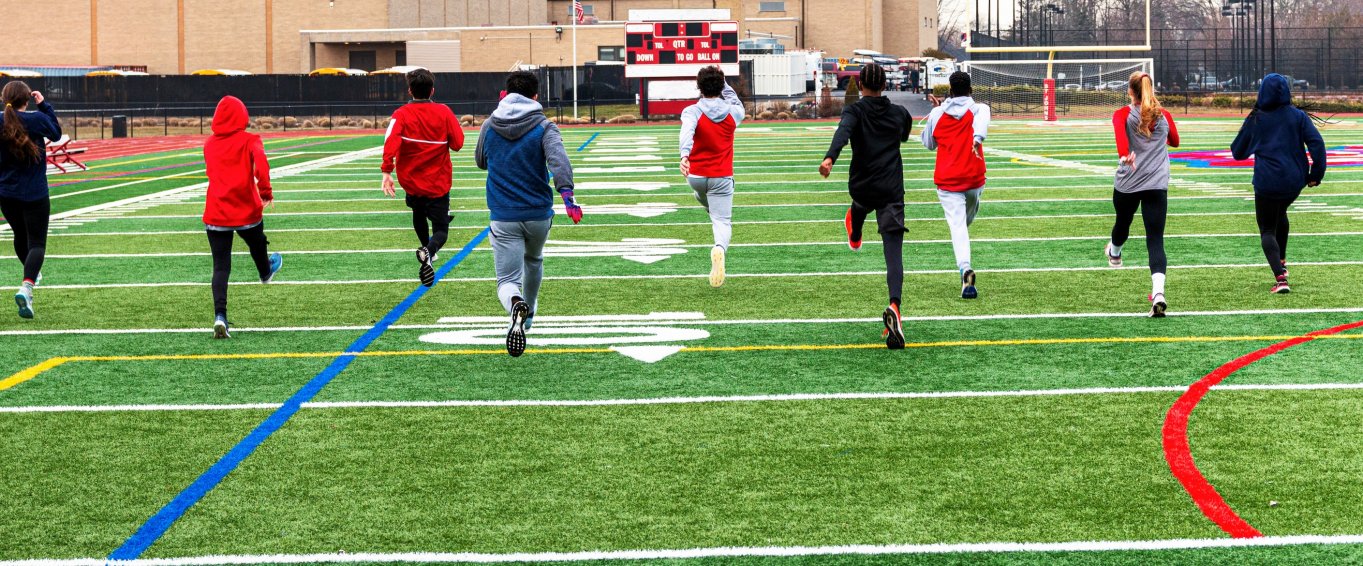
Sprinting is an essential quality that all young athletes need to practice. From a long-term development model or programme, the early stages or exposing to sprinting (pre-peak height velocity) are normally considered an essential movement skill. As the young athletes grow and mature, sprinting becomes more of a performance quality, as most sports require the athletes to accelerate and to be fast. Furthermore, the coach may dive into the sporting demands, for example, the different types of sprints, flying starts, static starts, average sprint distance covered, recovery rates, and the frequency of in-game sprints.
The complexity of sprinting is truly an impressive property of human evolution, with many adaptations being linked to changes in neuromuscular function and/or reflex mechanisms (18). From an overview, sprinting is normally divided into three main phases, 1) acceleration, 2) maximum velocity/speed, and 3) speed maintenance (20). Within the three different phases, most of the research (mechanically) has investigated two main areas, stride length and stride frequency. Moreover, the research has tried to identify specific components that may be associated with stride length and/or stride frequency to enhance performance, for example, force production, rate of force development, muscle recruitment coordination, tendon and musculotendon compliance and stiffness (18).
This type of thinking (different sprint phases, stride length and stride frequency) has also been related to youth development and sprint training, with investigations into the changes of sprint performance relative to the period of maturation.
Even though sprint training is considered an essential movement skill and performance quality, it’s surprising on the limited amount of research which has explored this area. The studies which have investigated sprinting in conjunction with growth and maturation have reported different findings. Young athletes, pre-PHV into PHV, undergo a rapid change in leg length, and this is thought to explain some of the speed changes (14). However, some reports show a decline in stride frequency, probably due to an increase in ground-contact time, as tendons are more compliant and lack stiffness (17), with reduced pre-activation strategies of the muscular system resulting in overall slower speeds. As there is a large variance in sprint performance at pre-PHV, it is recommended to regularly monitor young athletes and expose them to training modalities that develop neuromuscular function, for example, strength training (2, 8, 13) and plyometric drills (10).
As the young athlete moves through PHV, and post-PHV, sprint performance seems to stabilise and naturally improve. This is probably due to the changes in muscle mass, increasing in lean-body tissue, along with improvements in strength and tendon stiffness (17). Collectively, these changes through growth and maturation aid in sprint performance, but are non-linear, with limb changes, followed by the interaction of force production (strength) and tendon stiffness, which will result in higher rate of force development and reduced ground-contact times.

Preparing to Sprint with Strength Training & Plyometric Drills
For young and youth athletes’ a variation in training will help with motor skill development, including balance and coordination. Balance type activities for young athletes (6 – 7 years old) have shown to have small but positive outcomes with force outputs and jump height (8), interestingly, as the athletes mature and become much older the balance activities can be integrated into the strength training, as strength training, with or without balance-type drills have a significant role (11).
The early exposure to strength training is consistent with long-term athletic programmes (9), where strength training is recommended throughout the different ages and periods of maturation. Furthermore, as sprint training is seen as a movement skill with younger athletes, strength training seems to have a positive effect on all fundamental movement skills (3).
Plyometrics are another mode of training, which has shown to improve youth athlete’s sprint performance. Again, interestingly, plyometric drills produced significant acceleration improvements in youth athletes (pre-peak height velocity), where a combined approach – plyometric and strength training were more effective in older athletes (post-peak height velocity). The differences in sprint performances between youth and adolescent athletes (plyometric and combined plyometrics and strength training) can be explained due to changes in the stretch-shortening cycle. Youth athletes are experiencing many neurological changes, along with tendon adaptations - to utilise stored potential energy. Older athletes require both strength training and plyometric drills to further stimulate force outputs, rate of force development, and reflex strategies (17).
As athletes mature, both their absolute and relative strength levels show a positive correlation with sprint performances (4, 19). This is potentially more of a consideration in female athletes. As young females hit their PHV slightly early than males, there seems to be a stagnation post-PHV with young females compared to males (5). Body composition (lean body mass relative to body fat) influences strength and power outputs (12), therefore, female athletes should prioritise their relative strength to aid in peak force, robustness, and sprint performances (1).
Sprint Training
When considering sprint training, growth and maturation are important considerations, as this will help to set training objectives. Following the principle of specificity, strength and plyometric training, as previous discussed, will naturally fall into preparation type training, with sprint training being highly specific. Sprint training can further be sub-divided to focus on acceleration normally under 10-metres, and high-speed – top speed sprinting - 30-metres+ distances.
Young athletes, due to the considerations around strength levels, tendon compliance and the possible changes in leg length, their sprint training should be seen as skill development, along with other training modes – strength training, plyometric drills, as this will help with movement efficiency, motor control, balance, and coordination. Remember that sprint training for youth athletes is a foundation to their overall development. Regular feedback and support to younger athletes are important, as younger athletes may see little change in their performances. However, as the athletes mature into adolescence, they will generally see improvements in their sprint performance, especially if general training has been completed (for example, skill development, higher relative strength values, and tendon-reflex changes). In the meta-analysis by Moran et al. (2016) (15), the researchers reported that sprint distances around 20 metres with intra-rest periods of ~120+ seconds, with a training frequency of 2 sessions per week seem to be optimal for sprint training.
The analysis also stated that within sprint training, most of the trainable adaptations occur in the acceleration phase (shorter training distances). This is probably due to the longer contact times, which allows the athlete to generate force into the ground – this again, stresses the importance on maximum and high relative strength values. In high velocity sprinting, top-speed sprinting, the ground-contact times are extremely short, and pre-activation strategies and utilisation of the stretch-shortening cycle are potentially more important (6), with a tendency for the system to self-learn and self-organising performance strategies.
Summary
The complexity of sprinting is truly impressive and is a skill which needs to be regularly practiced. For younger athletes, sprint training should be a part of their overall development, along with strength training, balance, and plyometric drills, as this will develop a range of neurological and neuromuscular adaptations. As the athletes mature, their sprint performances will improve from changes in leg length, peak force, tendon, and reflex mechanisms. Absolute and relative strength levels are extremely important factors, and should be monitored, as this will help in strength training and goal setting. Shorter sprint distances are recommended, as many of the trainable qualities can be practiced and improved. A training frequency of 2 times per week, with long intra-rest periods are reported to improve sprint performances.
Youth Strength & Conditioning Platform for Schools, Sport Clubs, and Academies.
Our platform helps to deliver effective training and tracks athletic progress and development, with the core objectives of reducing the risk of injuries and to promote both sport readiness and performance. The platform’s features include -
- Strength and conditioning tests and dashboard to compare and contrast athlete metrics
- Athlete app - athletes can discover new exercises and train independently
- Track data - monitor athlete’s training loads, RPE, and training adherence
- Reports - simply create squad, team, and individual athlete reports
- Full curriculum - follow a strength and conditioning curriculum with a library of session plans
References
- Andersen, E., Lockie, R.G., & Dawes, J.J. (2018). Relationship of absolute and relative lower-body strength to predictors of athletic performance in collegiate women soccer players. Sports, 6(106), 1 – 7.
- Behringer, M., & Vom Heede, A. (2011). Effects of strength training on motor performance skills in children and adolescents: A meta-analysis. Paediatric Exercise Science, 23, 186 – 206.
- Collins, H., Booth, J.N., Duncan, A., & Fawkner, S. (2019). The effect of resistance training interventions on fundamental movement skills in youth: a meta-analysis. Sports Medicine, 5(17), 1 – 16.
- Comfort, P., Stewart, A., Bloom, L., & Clarkson, B. (2014). Relationships between strength, sprint, and jump performances in well-trained youth soccer players. Journal Strength & Conditioning Research, 28(1), 173 – 177.
- Eisenmann, J.C., Malina, R.M. (2003). Age and sex associated variation in neuromuscular of adolescent distance runners. Journal of Sport Sciences, 21, 551 – 557.
- Georgios, P., Athanasios, G., Charalampos, M., Dimitrios, P.,Eleni, B., Vassilios, K., Ninkolaos, A., & Christos, K. (2009). The effect of chronological age and gender on the development of sprint performance during childhood and puberty. Journal of Strength and Conditioning Research, 23, 1 – 6.
- Granacher, U., Goesele, A., Roggo, K., Wischer, T., Fischer, S., Zuerny, C., Gollhofer, A., & Kriemler, S. (2011). Effects and mechanism of strength training in children. Int J Sports Med, 32, 357 – 364.
- Granacher, U., Muehlbauser, T., Maestrini, L., Zahner, L., & Gollhofer, A. (2011). Can balance training promote balance and strength in prepubertal children? Journal Strength & Conditioning Research, 25(6), 1759 – 1766.
- Lloyd, R.S, & Oliver, J.L. (2012). The youth physical development model: a new approach to long-term athletic development. Strength & Conditioning Journal, 34(3), 61 – 72.
- Lloyd, R.S., Meyers, R.W., & Oliver, J.L. (2011). The natural development and trainability of plyometric ability during childhood. Strength and Conditioning Journal, 33(2), 23 – 32.
- Manolopoulos, K., Gissis, I., Galazoulas, C., Manolopoulos, E., Patikas, D., Gollhofer, A., Kotzamandis, C. (2016). Effect of combined sensorimotor-resistance training on strength, balance, and jumping performance of soccer players. Journal Strength & Conditioning Research, 30(1), 53 – 59.
- Mansour, G.B., Kacem, A., Ishak, M., Grelot, L., & Ftaiti, F. (2021). The effect of body composition on strength and power in male and female students. BMC Sports Science, Medicine & Rehabilitation, 13(150), 1 – 11.
- McQuilliam, S.J., Clark, D., Erskine, R.M., & Brownless, T.E. (2020). Free-weight resistance training youth athletes: a narrative review. Sports Medicine, 50, 1567 – 1580.
- Meyers, R.W., Oliver, J.L., Hughes, M.G., Lloyd, R.S. and Cronin, J.B. (2016). The influence of maturation on sprint performance in boys over a 21-month period. Medicine and Science in Sports and Exercise, 48(12), 2555 – 2562
- Moran, J., Sandercock, G., Rumpf, M.C., & Parry, D.A. (2016). Variation in reposes to sprint training in male youth athletes: A meta-analysis. Int J Sports Med, 38(1), 1 – 11.
- Nagahara, R., Haramura, M., Takai, Y., Oliverm J.L., Wichitaksorn, N., Sommerfield, L.M., & Cronin, J.B. (2019). Age-related differences in kinematics and kinetics of sprinting in young female. Scandinavian Journal of Medicine & Science in Sports, 26(6), 800 – 807.
- Radnor, J.M., Oliver, J.L., Waugh, C.M., Myer, G.D., Moore, I.S., & Lloyd, R.S. (2018). The influence of growth and maturation on stretch-shortening cycle function in the youth. Sports Med, 48, 57 – 71.
- Ross, A., Leveritt, M., & Riek, S. (2001). Neural influences on sprint running. Sports Med, 31(6), 409 – 425.
- Wagner, C.M., Brauner, T., Warneke, K., Stefer, T., Kuhn, L., Hoffmesiter, M., Wirth, K., & Keiner, M. (2023). Absolute and relative maximum strength measures show differences in their correlations with sprint and jump performances in trained youth soccer players. Montenegrin Journal of Sports Science & Medicine, 19(1), 3 – 8.
- Young, W.B. (2006). Transfer of strength and power training to sports performance. International Journal of Sports Physiology and Performance, 1, 74 – 83.
